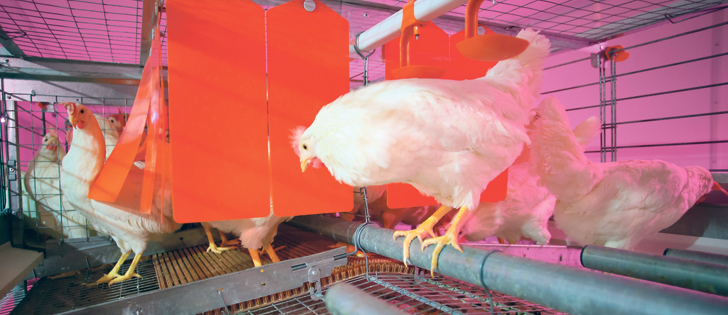Researchers are delving deeper into the nesting motivations of birds and finding them as finicky about nesting as humans are about their comfort.
They are also finding more research needs to be done.
Michelle Hunniford, a postdoctoral researcher in the Department of Animal Biosciences at the University of Guelph, is researching the nesting behaviour of laying hens
She has found that new ways of evaluating nesting behaviour are needed.
She told a session at the London Poultry Show that settling behavior, the process hens go through to find and get themselves comfortable to lay an egg, along with egg location should drive cage design evaluation. The speed that a hen gets to that comfort level is correlated to how much pecking it does to establish its space and how long it occupies nesting space.
Read Also

Farming Smarter receives financial boost from Alberta government for potato research
Farming Smarter near Lethbridge got a boost to its research equipment, thanks to the Alberta government’s increase in funding for research associations.
The University of Guelph re-searchers observed hens through their waking period — lights came on at 5 a.m. — and recorded their behaviour.
They then created graphs that showed a “settled” laying hen moved through its settling phases in more defined periods compared to an “unsettled” layer hen.
In most enhanced systems, the layers have a nesting area, with flooring and a scratch area.
Hunniford and her colleagues looked at what nests would motivate hens to settle in the desired nesting areas.
They found it was difficult to predict which hens would lay where and some hens preferred one system while others chose another.
As a result, one of Hunniford’s recommendations include that providing two smaller nests is more important that providing one large, fully furnished nest.
In their experiments, they found that when there was a wire partition in the cage, the hens would also lay their eggs in the area be-side the partition, as well as in the nesting area. When there was no partition, fewer laid their eggs in that area.
“Hens in cages with a wire partition searched less, sat less frequently and were less aggressive.”
Hens in their experiments laid eggs in both the scratch and the nest areas.
The most recent code of practice for poultry says that hens should have at least 65 sq. centimetres, but Hunniford said their research showed effective nesting and production at 62 sq. cm.
Hunniford said their research found that in nests that were 70 to 100 sq. cm, the hens had a sharper spike in laying time, meaning more of them were trying to lay around the same time. In smaller cages, 62 sq. cm, the time of laying was spread out, which means less aggression.
The hens used in the two trials had different genetics, but cage and nest size and design also were a factor, said Hunniford.
A trial was also conducted to test different flooring options for nests and the importance of curtains. Hens prefer straw or even astroturf, but both create problems with waste management in an egg production system.
Therefore, plastic pads form the solid portion of cages in most systems. Hunniford tested both yellow mesh flooring and solid red flooring, both with and without plastic curtains around the nests.
The results showed that hens spent equal time in the cages with both floor types as long as there were curtains. Without curtains, the hens chose to lay on the solid, red floor more often.
Hunniford said there needs to be more research to determine the hens’ interest in different flooring.
Tina Widowski, who works with Hunniford, said that giving hens the ability to enter and exit the nest from several directions through the curtains is important.
“Not being trapped in a solid area is important to their safety and welfare,” she said.


















